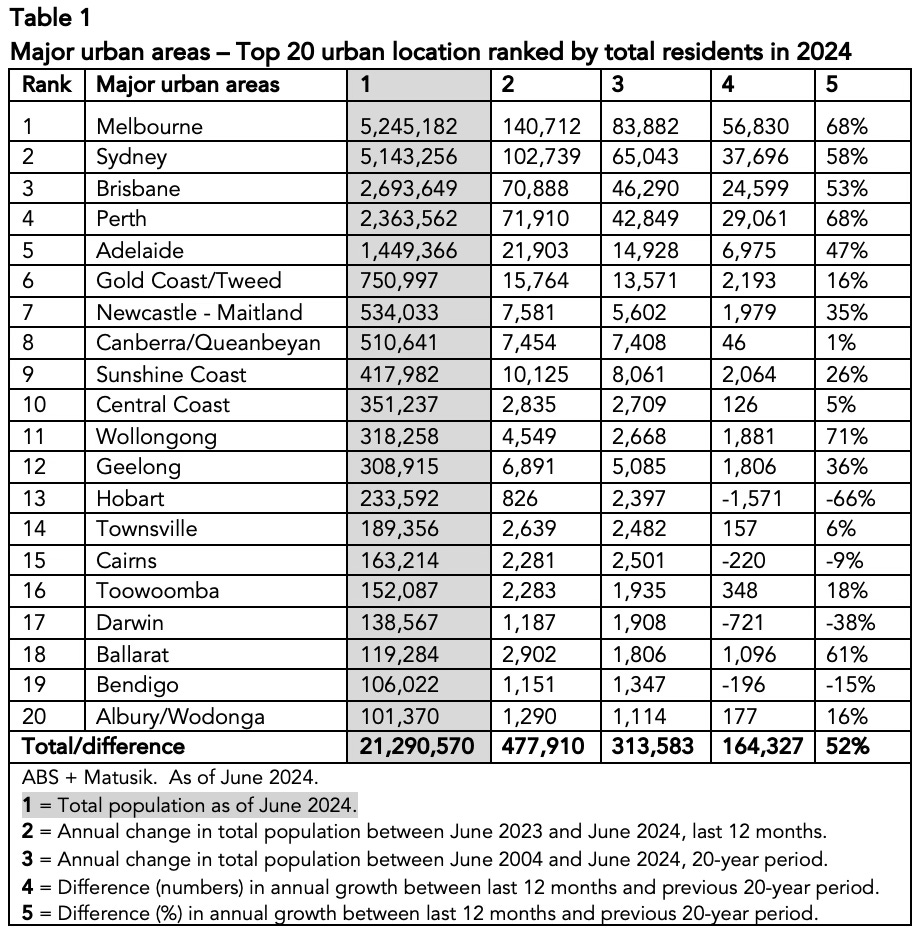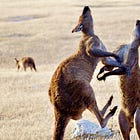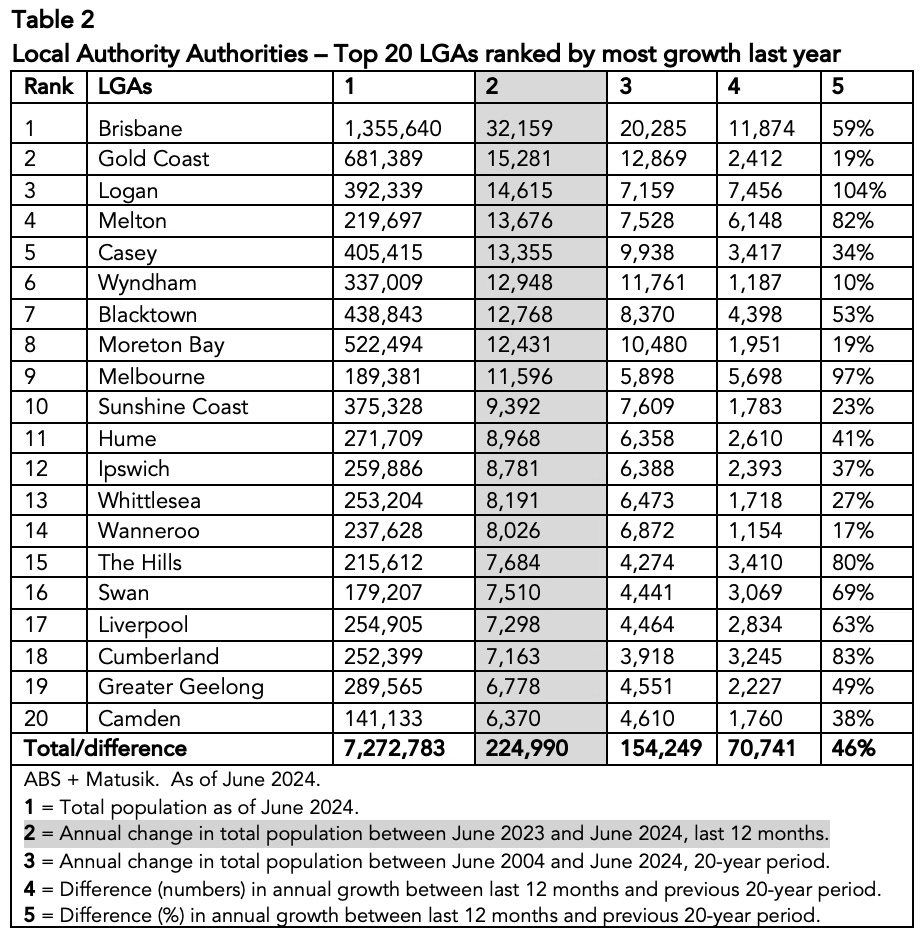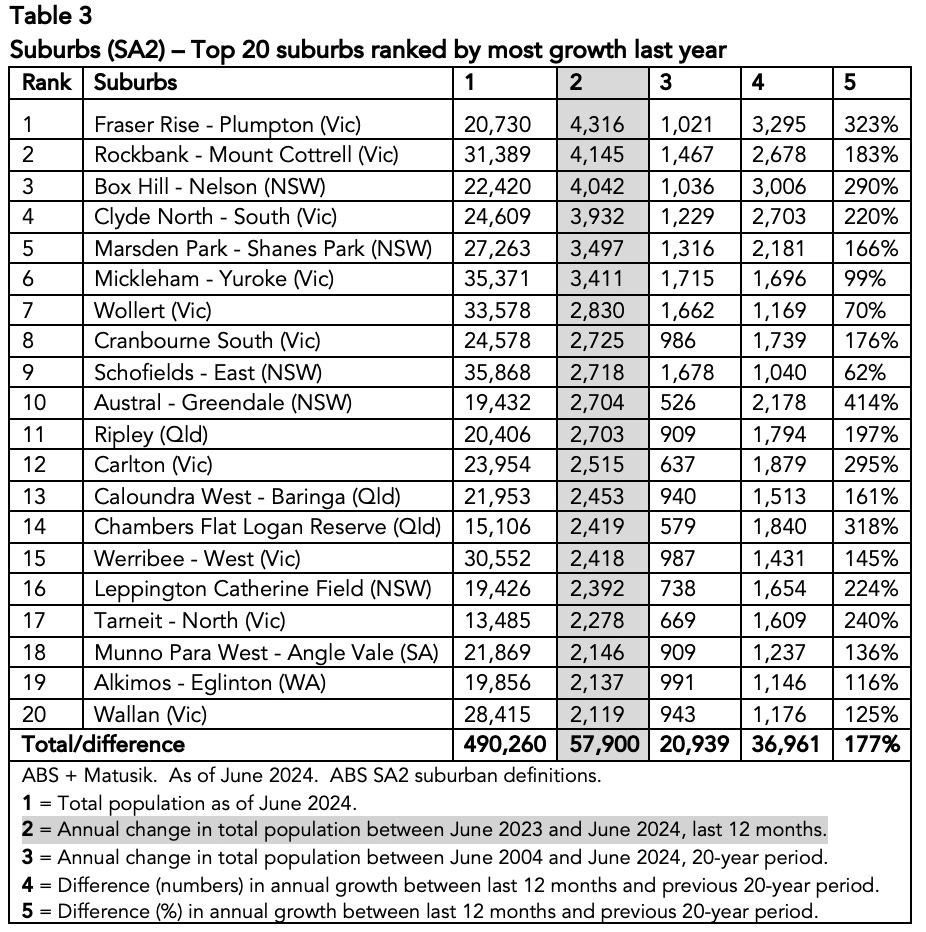Top of the pops
Population growth three ways
Data heavy this week.
Major urban areas
Australia’s population reached 27,194,500 in June 2024, growing by 541,500 residents over the past year.
The top 20 major urban areas accounted for 88% of that growth.
Melbourne led the charge with an increase of 140,750 residents, followed by Sydney and Brisbane.
Notably, growth has accelerated in most capitals over the past 12 months compared to the previous 20-year average - especially in Brisbane and Perth.
However, some regional centres like Hobart and Cairns saw declines in growth momentum.
Overall, the big five cities added nearly 400,000 people last year, highlighting our continued urban concentration and the growing strain on metropolitan infrastructure.
There are 102 major urban areas across the country, and for paid subscribers, this total list ranked by population size is included below the paywall.
Not a paid member? Shame! Fix that now.
Oh, and Melbourne bigger than Sydney. Surely you jest! Well, check out why below.
Local government authorities
Over the past year, Australia’s fastest-growing local councils added 225,000 new residents - just over 40% of the nation's total population growth.
Brisbane led the pack, followed by the Gold Coast, Logan, and Melton.
Some LGAs - like Logan, Melbourne (LGA), and Cumberland - are seeing growth rates nearly double their 20-year averages.
The outer metro belts of most capitals continue to absorb the bulk of new arrivals, especially in southeast Queensland and Melbourne’s western fringe.
It’s a clear reminder: population pressures aren’t just a capital city story - they’re a growth management challenge increasingly shouldered by suburban and peri-urban LGAs, many of which are already straining under infrastructure shortfalls.
And there are 541 LGA’s across Australia. And you guessed it, paid members get the full population growth list too.
Interestingly - and in contrast to what many Taswegians would say - Glenorchy council (immediately north of Hobart) came in 537th with a loss of 125 residents last year. Followed by Hobart ranked at 538th, down 130 peeps and Launceston came in last, with 261 fewer residents in 2024 when compared to twelve months before.
Suburbs
Of Australia’s 2,473 suburbs, just 20 absorbed over 57,000 new residents in the past year - more than 10% of national suburban growth.
Victoria dominates the list, with ten entries in the top 20 list, led by Fraser Rise–Plumpton, which grew at over three times its 20-year average.
Suburbs in western Sydney and southeast Queensland also feature prominently.
These areas are fast becoming the country’s new housing frontiers, offering affordability, land supply, and access to basic infrastructure.
Growth in these hotspots has accelerated dramatically - up 177% compared to their historical norms - highlighting a national shift toward outer suburban expansion and the increasing importance of managing urban sprawl and service delivery.
And yes, paid members get access to every suburban population result - that’s a whopping 2,473 burbs - as per the table above. This is sorted out by state or territory. Again, below the paywall.






